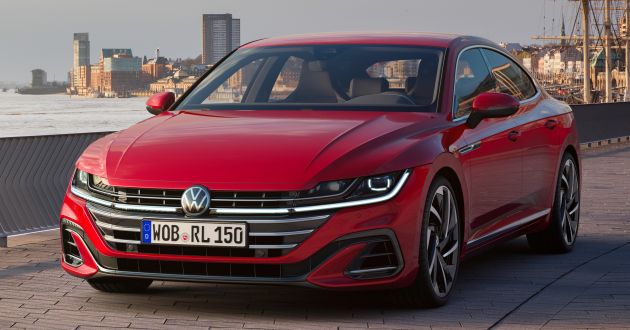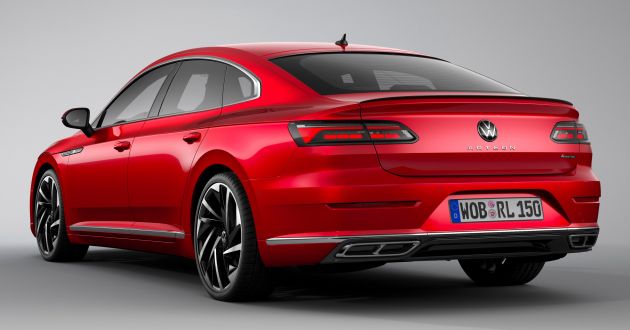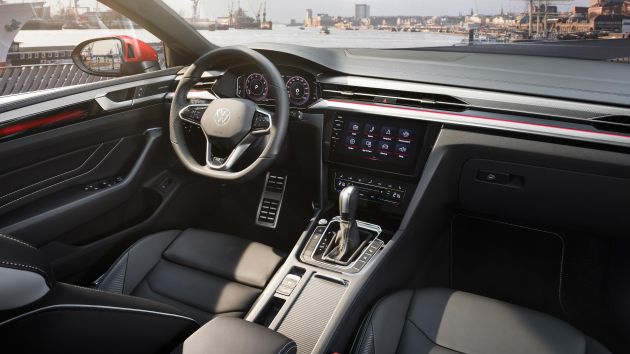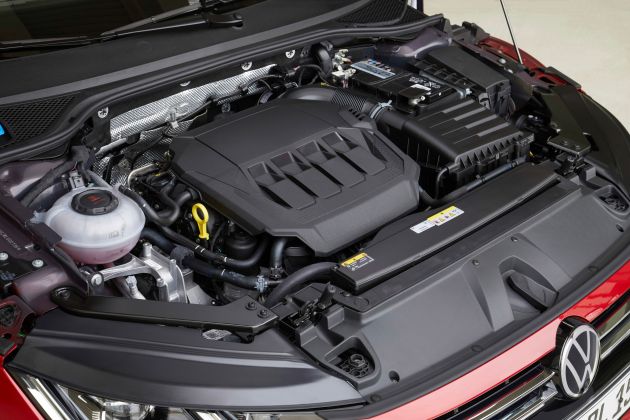The official launch of the 2021 Volkswagen Arteon facelift is nigh. The order books have been opened for over three weeks now, and the managing director of Volkswagen Passenger Cars Malaysia (VPCM), Erik Winter said “booking has exceeded expectations.”
In case you missed the news, VPCM has begun taking orders for the Arteon R-Line 2.0 TSI 4Motion, with prices expected to be in the region of RM245k to RM255k. That puts it directly against some aspirational premium models, such as the G20 BMW 330e and W205 Mercedes-Benz C 200, give or take.
The kicker is, they are all locally assembled, which begs the question – is the Arteon deliberately designed to challenge the status quo? We speak to Volkswagen exterior design head, Marco Pavone and interior design head, Tomasz Bachorski to find out.
More than in most other countries, Volkswagen is seen as a near-premium brand in Malaysia, with prices to match BMW and Mercedes too. Was the Arteon designed with this in mind?
Pavone: Design is a good instrument to transport the value of the car. But of course, the price tag of a car isn’t just dependent on its design alone. Volkswagen is well known for its high quality in processing, and its craftsmanship.
This is really evident with the details of the new Arteon – the frameless windows, the design of the bonnet, the lighting in the exterior and interior, and the selection of colours and materials in the interior. We believe that these are key factors in attracting new target groups and customers from other premium brands.
The Arteon facelift has distanced itself more from the Passat, at least in terms of interior design. Talk us through the reasons behind this.
Bachorski: At the beginning of the Arteon project we had two main goals – to create maximum differentiation between the Arteon with the former Passat, and to design our most premium looking model yet to cater to a new target market.
The main theme of the Passat’s interior is the design of its air vents. That was why it was necessary, in the case of the new Arteon, to think about a new design theme for the air vents. So, for the new Arteon, we created slimmer and driver-oriented air vents with one visible decorative lamele design. The Arteon’s air vent has no classical round controllers on the side, which gives it a minimalistic, modern and sporty look.
Below the vent is our visualisation of a 3D design, which connects the dashboard with the doors. Together with the door handles, we see it as an extension of the exterior front grille design. Then we also have the ambient lighting as part of the interior, which runs around the cockpit and is integrated in the door trim (or décor). That solution allowed us to make lighting more “seamless” than the Passat.
Other differentiation includes the materials used and their placement. In the Passat we have material such as wood in the lower area. With the Arteon, it is present at the top half area of the cockpit. This façade extends to the new digital cockpit instrument cluster area and is carried into the doors. This wraparound theme creates a “room” concept that makes the interior visually wider.
Around the main infotainment display we also have new décor design. This brings a more seamless and integrated look, that is akin to a tablet. Besides that, we have new touch-sensitive air-conditioning controls underneath the infotainment, which are more modern than the Passat.
Malaysia is one of very few markets to locally assemble the Arteon outside the mother plants in Germany and China. How significant is that, and what are the key factors behind it?
Volkswagen Product Communication Team: We recognise that to be competitive in Malaysia, local production is a key factor. At the moment, 100% of the product line-up offered is assembled locally, which is something that our Malaysian colleagues should be really proud of.
Are engine choices affected or limited by Malaysia’s relatively poor fuel standards (Euro 4 for petrol)? And any plans to offer engines with gasoline/petrol particulate filter here?
VW comms team: While different fuel qualities worldwide obviously require adjustments, the engines offered in Malaysia are suitable for the local fuel standards. Engines with particulate filters are currently being tested for use in Malaysia.
Just to recap, the new Arteon will get the much anticipated EA888 2.0 litre TSI turbocharged four-cylinder engine that now makes 280 PS from 5,100 to 6,500 rpm and 350 Nm of torque between 1,700 and 5,600 rpm. That’s actually 50 Nm less compared to European models, but it’s still considerably more powerful than the outgoing model’s 190 PS and 320 Nm output. A seven-speed DSG wet dual-clutch transmission and 4Motion AWD will send it from zero to 100 km/h in just 5.6 seconds.
Standard equipment includes full LED headlights, LED tail lights with sequential indicators, 19-inch Montevideo two-tone alloy wheels (same as before), Nappa carbon-print leather upholstery, 12-speaker, 700-watt Harman Kardon sound system, a 9.2-inch Discover Pro infotainment touchscreen wireless Apple CarPlay and Android Auto connectivity, a 360-degree camera, a hands-free powered tailgate, and Dynamic Chassis Control (DCC) adaptive dampers.
GALLERY: Volkswagen Arteon R-Line facelift official press images





























